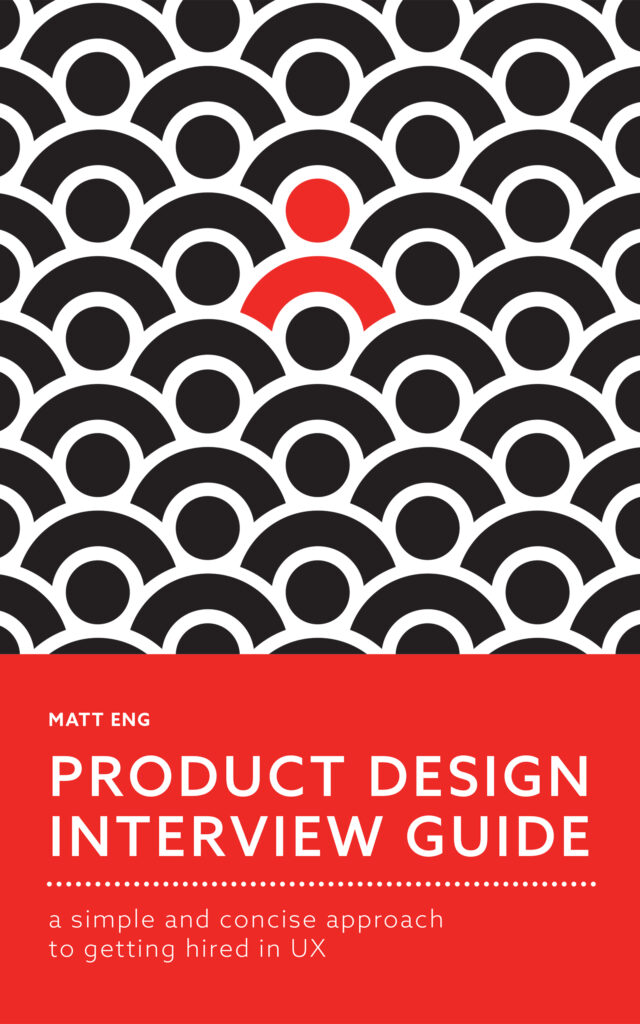For most of this semester, I have been preparing my portfolio students to practice pitching their work and their skills for the impending UX design job interview. This week will be the last class for the semester. After they do their final presentations and graduate, the school will release them into the wild. Those who can best visually communicate their work will get a crack at the most competitive product companies and agencies. The next test will be how to verbally communicate their work.
After observing and reflecting a couple of years of portfolio presentations, I can safely say that no one likes presenting their work. Everyone admitted to being at least a little nervous. There were a few cases where students wanted to drop the class to avoid presenting all together.
From my experience, the best interviews were when I felt mostly at ease. I was comfortable with explaining my work, I knew what the people in the room were going to ask, and I understood the competition for the job opportunity. This did not come naturally. I had to fail at a lot of interviews before I got a better understanding of how to prepare.
1. Learning job interview basics
Before I start to talk about the specifics of a UX design job interview, I should cover the basics that come up in conversations with my students. These are tips that I gleamed from resources such as themuse.com in their article, “The Ultimate Interview Guide.”
Over the years, I tweaked this list from my own experiences. I found that there were things you need to do to make sure you were in the right mental state before an interview. One was to make sure I was not distracted by hunger pains or post lunch breath.
Before the interview
- Research the company and who will interview you
- Prepare questions for those people
- Print out five copies of your resume
- Map out the interview location
Day of the interview
- Dress like appropriately
- Eat a light meal
- Take care of your bathroom needs
- Show up early
- Take down the names of the people in the room
Immediately after of the interview
- Write an email thanking the people in the interview
- Write a handwritten letter to the same people
The last tips for after the interview were not basics. It was advice from a creative director who talked about leaving a lasting impression. He said that he kept every handwritten letter he had ever received. When I sent one, the feedback I got was overwhelmingly positive. The hiring manager remarked, “(the letter) showed me that you really wanted the job.”
2. Preparing your work for a UX design job interview
This is the nitty gritty of showing your work. If you took care of step one, then you would have researched the company. Put work in the portfolio that can relate to the work of your potential employer. If the company specializes in mobile payments, then show work that can speak to those needs. Make it easy for the interviewers to imagine you on their teams and doing their work.
Do not rely on the office WiFi to access your work. I have a pdf version on my laptop or iPad. I also send it to the interviewers less than 15 minutes before the meeting. Why 15 minutes? I learned from my agency experience that if I gave less time to mull over the work, I would spend less energy correcting assumptions.
As for how to organize your work into a cohesive narrative, read my post on how to make a kick-ass portfolio project.
3. Practicing for the conversation
You are partly pitching your work and your abilities. You also have to have a conversation. It is a balance of making sure they remember you, but you do not want to dominate the room. I have been in interviews where I let the interviewers talk for almost 90% of the time. I was then left with very little time to build up the story around my work.
Before the interview, write out questions they might ask. Some of them are stock such as interests and favorite design blogs. Spend time to think about what questions they would have about your work specifically. You probably remember the feedback from your classmates or colleagues about this work. Start with those critiques to prepare your answers.
During the interview, look for cues for when you can inject your work into the conversation. Do not wait for the interviewers to invite you to reveal your portfolio. In one interview, the interviewer asked about a time I learned from a failure. I used that opportunity to show a piece that could tell that story.
Make an effort to get in front of a whiteboard
Make an effort to get in front of a whiteboard. Talking about your process and how you collaborate is ok, but showing the interviewers how you work can better illustrate this skill.
4. Know where you stand
I have failed many interviews when I could not define what I wanted to do or what I wanted from a particular opportunity. Some of my colleagues have been lucky. Right out of school, they got offers almost immediately. In my case, I interviewed for almost six months after I finished my program. One of my former students searched for nearly a year.
He and I separately came to the same conclusion. We realized that we had to communicate what we were type of work we were confident in doing and what skills we needed to improve. In my case, I entered every job interview after this epiphany with a sureness of where I stood on my abilities and what I could offer. Each time I knew I could offer a little more.
Final thoughts on the UX design job interview
Congratulations! You landed a job interview. Now comes the hard work of preparing not just your work but how you need to present yourself. Find ways to make it easy for your potential employer to imagine you on the team. Look for opportunities to not just talk about your work but show how you work.

